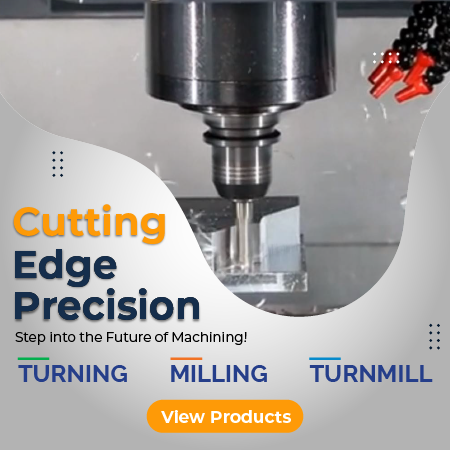Unlocking the Future: The Role of IoT in CNC Machines – 2025 and Beyond
In an era where manufacturing is transforming rapidly, the Internet of Things (IoT) has emerged as a game-changer for industries worldwide — especially in CNC machining. IoT is no longer a buzzword or an optional technology but a necessity for companies aiming to stay competitive, efficient, and agile.
What is IoT in CNC Machines?
IoT in CNC (Computer Numerical Control) machines refers to the integration of sensors, connectivity, and data analytics to monitor, analyze, and optimize machine operations in real time. By linking machines to a network, operators and manufacturers gain deeper insights into machine performance, utilization, maintenance needs, and process optimization.
Why IoT is Necessary for CNC Users?
1. Maximizing Machine Utilization
IoT enables real-time tracking of machine status — idle time, running time,
downtime causes — giving manufacturers precise data to improve Overall
Equipment Effectiveness (OEE). In 2025, where global competitiveness is
high, unlocking hidden capacity is essential.
2. Predictive Maintenance for Reduced Downtime
Gone are the days of reactive repairs. IoT sensors monitor parameters like
vibration, temperature, and tool wear, predicting failures before they occur.
This saves money, avoids unplanned downtime, and prolongs machine life.
3. Data-Driven Decision Making
IoT platforms provide actionable insights. Plant heads, production managers,
and shop-floor operators can make quick, informed decisions on scheduling,
resource allocation, and load balancing based on real-time data, not
assumptions.
4. Remote Monitoring and Control
In the post-pandemic digital world, remote monitoring is crucial. IoT allows
CNC machines to be monitored from any location, ensuring safety, efficiency,
and flexibility — important for plants operating across multiple sites.
5. Energy Optimization
IoT helps track and optimize power consumption patterns of machines,
reducing energy costs — an often-overlooked yet significant area in today’s
sustainability-conscious world.
Industry Applications of IoT in CNC
1. Automotive
High-volume, high-precision components demand uninterrupted machine
performance. IoT ensures proactive maintenance and consistent quality
control.
2. Aerospace
With complex, high-tolerance parts, IoT aids in process control, data logging,
and traceability - key requirements in the aerospace sector.
3. Job Shops & MSMEs
Small and Medium CNC shops benefit from IoT by improving capacity
utilization and cost control - making them competitive against larger players.
4. Medical Equipment Manufacturing
Strict quality standards require precise process monitoring. IoT systems
provide complete traceability and documentation of machining parameters.
What is Required to Implement IoT in CNC?
1. Connectivity (Edge Devices & Networks)
Machines must be equipped with IoT-ready controllers and sensors for data
collection and transmission.
2. Data Security & Privacy Protocols
As data flows between machines and cloud servers, robust cybersecurity
measures are essential to protect sensitive manufacturing information.
3. Integrated IoT Platforms
User-friendly platforms that aggregate, visualize, and analyze machine data
— accessible via dashboards or mobile devices - are critical.
4. Skilled Workforce
Operators, supervisors, and maintenance teams require basic IoT literacy to
interpret insights and take timely action.
5. Scalable Infrastructure
As production scales or diversifies, the IoT system must adapt to new
machines and processes without extensive reconfiguration.
Why CNC Users Cannot Ignore IoT?
- Global Competition: Competing with world-class manufacturers demands operational excellence.
- Cost Control: Energy, raw materials, and labor costs can be optimized with real-time insights.
- Customer Demands: Industries like automotive and aerospace expect digital traceability and performance reports from their suppliers.
- Sustainability: Energy-efficient, optimized production helps meet green manufacturing norms.
- Business Continuity: Predictive maintenance reduces the risk of production halts, ensuring on-time delivery.
IoT is reshaping CNC machining in 2025 — not as a futuristic add-on, but as an integral part of the manufacturing process. For machine shop owners, plant managers, and OEMs, investing in IoT is no longer optional; it is the pathway to higher productivity, cost savings, and sustained competitiveness.
The future of manufacturing is smart, connected, and data-driven. Are you ready to embrace it?


